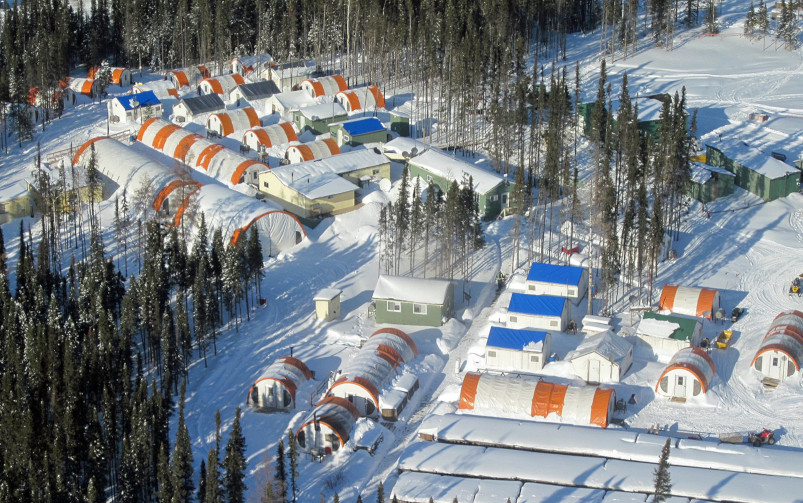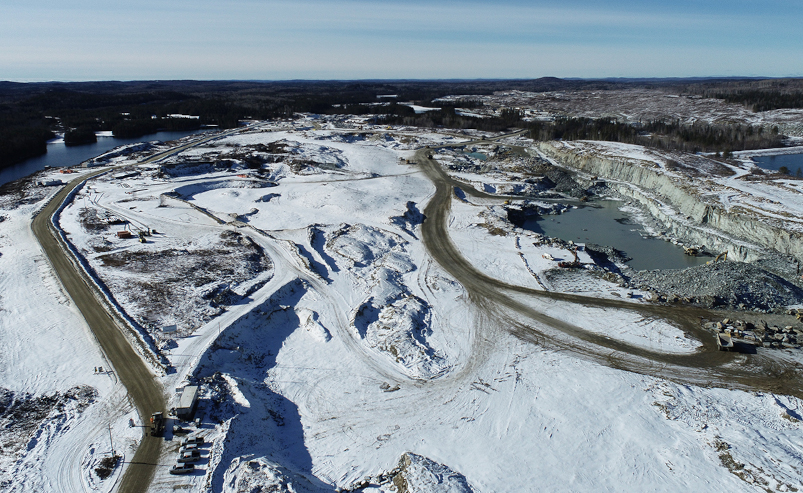Rio Tinto's investment in Western Copper and Gold will be spent on economic studies and permitting at the Casino project in the Yukon. Courtesy of Western Copper and Gold.
Welcome back to your weekly mining news recap, where we catch you up on some of the news you may have missed. This week sees some high hopes for the post-pandemic mining economy, continued intrigue over Centerra gold’s mine in the Kyrgyz Republic and new national research on how to make mineral processing more efficient.
Cobalt, Ontario, once the largest producer of silver in the world, is set to participate in another boom as it becomes a key part in the electric vehicle production chain, as First Cobalt is set to bring North America’s only cobalt refinery back into production for October 2022. While planning the restart, First Cobalt decided on an avenue that would allow the refinery to immediately hit outputs of 55 tonnes per day of cobalt hydroxide. Timely, as both cobalt content in electric vehicle batteries and demand for the batteries themselves are expected to increase.
Researching new and better ways to recover and process metals from sites is critical to the development of more efficient mining. CIM Magazine interviewed CanmetMINING’s director of green mining innovation Janice Zinck, research scientist and section head of Mineralogy Dr. Yves Thibault and research scientist Dr. Joanne Gamage McEvoy to learn about Canada’s role in the development of more sustainable practices and technology in all areas of mining.
Rio Tinto Canada is investing $25.6 million for an eight per cent stake in Western Copper and Gold, which is advancing its copper-gold Casino project in the Yukon, as reported by The Northern Miner. The large strategic investment will be put towards economic studies and permitting, and comes with an investor rights agreement that allows Rio Tinto to appoint a member to the project’s technical committee and send an observer to Western’s board meetings.
Wesdome Gold Mines has expanded the high grade Footwall zone at its Kiena gold mine over 300 metres down plunge, reports The Northern Miner. The drilling returned highlights of 41.2 grams per tonne over 51.2 metres (capped at 25.7 grams per tonne); 27.7 grams per tonne over 12.3 metres (capped at 27.7 grams per tonne); and 16.7 grams per tonne over 9.0 metres (capped at 14.9 grams per tonne). Duncan Middlemiss, the company’s president and CEO, said in a press release that the discovery could have “major positive impacts on the project” and that the Kiena mine “has the potential to be in commercial production by Q4 of this year.”
After years of shunning it, generalist investors are starting to move back towards the mining sector, Reuters reports, thanks to surging prices for commodities, stronger balance sheets and rising inflation. Commodities are generally expected to stay strong during times of fiscal inflation, and several major mining companies such as Rio Tinto, BHP, Anglo American and Glencore have seen their share prices double in the past year. Some hedge fund managers are preaching caution, as ongoing supply disruptions from COVID-19 may be affecting prices.
The COVID-19 pandemic has meant a reversal of four years of growth for the top mining companies in British Columbia, Mining.com reports. After recovering from a revenue fall from 2016 to 2017, the big mining companies were able to make their way back to average revenues of $1.7 billion in 2019. But the pandemic shaved 30 per cent from that total in 2020. Globally, the pandemic has also had a serious effect on capital expenditures, with Mining.com reporting that an S&P Market Intelligence report has found that, among the more than 400 companies examined, actual capital expenditures fell eight per cent in 2020 from the beginning of the year, to levels slightly below those of 2019. However, 2021 is already expected to see those numbers go up again, with predictions of capex of $176 billion for 2021 due to surging metal prices.
The Kyrgyz Republic has taken control of and nationalized Centerra Gold, Inc.’s Kumtor mine. The Government has alleged that it has had numerous environmental and worker safety concerns surrounding the mine, and recently signed a law giving it the power to nationalize businesses that violate environmental laws. In the most recent development, The Globe and Mail reports that Centerra has filed a lawsuit aimed at ousting the Government’s external manager of the company, alleging that he conspired to take the mine from them while he was on the board of directors, purportedly “working in secret with Canadian and U.S. law firms and the Kyrgyzstani government to expropriate the mine.”
A new report shows the outsize benefits for emissions and energy savings that are available to mining companies through improvements in their comminution processes. The report looked at five commodities – copper, gold, iron ore, nickel and lithium – and demonstrated that comminution processes were the largest single user of energy at mining operations, meaning that small improvements in comminution can reduce both energy costs and environmental impacts.
Glencore has announced that it is piloting blockchain technology to trace responsibly-sourced cobalt along the supply chain. The technology will integrate different sustainable mining and sourcing standards and frameworks and will allow for the certification of each individual unit of cobalt produced. Developed alongside China Molybdenum Company, Eurasian Resources Group and Umicore, the solution is being tested in cobalt supply chains in the Democratic Republic of Congo, and is expected to be released in 2022.
That’s all for this week! If you’ve got feedback, you can always reach us at editor@cim.org. If you’ve got something to add, why not join the conversation at our Facebook, Twitter or LinkedIn pages? Like your recap with a few more gifs? Check out our mining news recap stories on our Instagram.
Remember to stay safe, keep your distance and wash your hands!




